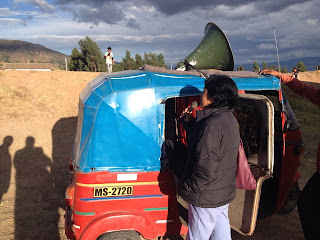Day 5
Though we have only spent 5 days at the hospital, it feels like we’ve been there for much longer, and it will seem so strange to not walk down the now familiar streets tomorrow morning. The stories you’ve read from me so far are just a fracture of all the stories everyone here has experienced. Every day when we would see each other, either eating dinner together, walking in the town square, or hanging out in the courtyard of our hotel, we all had something special to share. The surgeons spoke of interesting surgeries they had performed that day, the nurses of the patients they had cared for, and us volunteers, who are not use to the medical world, of the unique situations we experienced, but most of all, of the truly sincere kindness, warmth, and appreciation these people showed. The affection that they were not afraid to show was a surprise to me, especially with people who they had trouble communicating with.
Our last day was a shorter day, which is how they have it set up. We saw patients who had any complications from surgery, any children who still needed surgery and came from far away, and did lots of following up and closure.
I had 2 memories from Friday that touched especially. One was the young girl, who we called “Roxy,” whom I wrote about in my last post. She came back to the hospital on Friday, found Scott, as she knew where he would be, and then the 2 of them came to find me because she had a present for me. She brought me a bag of these traditional rolls from Ayacucho that her mom had made, and another bag of corn, that you fry to make a sort of pop corn, and then wrapped in newspaper, a clay decoration that is to bring you plentiful food and wealth. She was so excited to watch me open it, and just kept giggling. I took off my small heart necklace that I’ve had for several years and put it on her, so that she would remember me as well. I hope I see her again if we can come back next year.
The other memory that was special was when an older woman, who I had seen when I worked with the general surgeon on Thursday, came and found me, holding in her arms her 2-day old grandson. She asked me if I would name her grandson!! So, naturally I start going through all my brothers’ names, and she keeps saying no, we already have one with that name in our family. So, I start going through all my dad’s brothers’ names, and still not getting anywhere. Then, out of the blue, she says “I think I’d like something really different for him, like in Japanese or Chinese! Seriously?? Now, that one really threw me for a loop, so I start scrambling, until I think of Yao Ming, the basketball player. So I tell her that name, and how maybe if she names her grandson Yao Ming he’ll grow big and strong. Not so wild about it…. ! By this time, I have no idea of other names, so I see one of our Asian volunteers, Ray, walking toward me, and begged him to throw out some names. He came through, we wrote down 4 names, including Yao Ming, and she said she would choose one of those! Phew!!

The day ended with an appreciation lunch at 2:00, put on by the hospital, which was a nice way to all come together, though 3 of our surgeons were still in the OR. From there we went back to the hotel, packed and just hung out visiting, exchanging emails, etc…, until the big double decker came at 7:00 to take us back to Lima. We arrived in Lima at 6:00am and then waited for our different flights. Scott and mine took off at 10:00 , so that wasn’t too bad. We are now in Cusco, and I will wait until tomorrow to write about this next part of our trip. Love to all of you!









